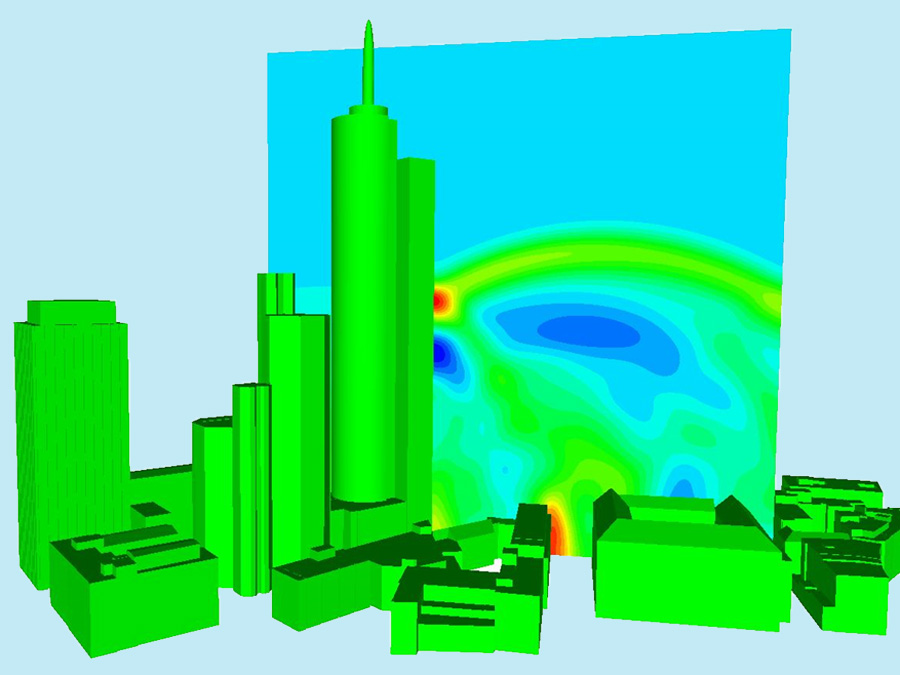Explosion safety for municipal areas
Engineers simulate the detonation of aircraft bombs

In August 2012 a 250 kilogram aircraft bomb from World War II was discovered in Munich. Since it could not be defused it was detonated in a controlled explosion. 2500 people had to vacate their homes. The shockwave damaged surrounding buildings: broken windows, cracks in walls and collapsing floors. In November 2013 the controlled detonation of a dud bomb in Oranienburg even destroyed an entire house next to the site of the bomb.
In the German Federal Ministry of Education and Research (BMBF) "Procedures for the analysis of detonation effects in urban areas" (DETORBA) project, a team of scientists headed by Prof. Martin Mensinger from the Chair of Metal Structures at TU München is researching possibilities for predicting damage to buildings through detonation shockwaves by innovative simulation environments.
Detonation shockwave superposition
But first the engineers built realistic models to predict the behavior of the detonation shockwaves. Shockwaves are reflected by buildings. This results in multiple superposition of the reflected waves. Even simple building structures bring forth extremely complex interactions. In order to calculate these as accurately as possible the engineers use high resolution three-dimensional city models based on geo information systems (GIS).
Since the vulnerable areas of buildings and building elements are well known, the researchers can use the models to predict very accurately both the locations in a building structure in which damage may occur and the extent of that damage. But the scientists also assess the danger posed to people in municipal areas. Here, generally recognized injury indicators are considered in the calculations.
Resilience in columns protects structures
The engineers analyze how and where an explosion deforms individual building elements and entire buildings using a combination of shockwave simulation and mechanical models. Based on these results they research ways to improve the resilience of building columns, for example.
"We have shown that supports are stressed significantly less by shockwaves if they are flexible," says civil engineer Stefan Trometer. "Targeted flexibility occurs, for example, when a non-rigid joint is placed between a support and the foundation. If this anchor point is also located slightly below the ground surface it has an additional positive influence on resilience. To this end we are developing special supports using steel-concrete composite constructions."
The results can also be used to generate risk maps for hypothetical scenarios like dud bomb discoveries or other threats. In emergency cases the simulations should be available to emergency response personnel, giving them access to information on the extent of expected damage and which areas will remain clear and available for evacuations, for example. But also the evacuation of buildings following the discovery of aerial bomb duds could be planned better.
About the project:
The project "Procedures for the analysis of detonation effects in urban areas" (DETORBA) is funded by the German Federal Ministry for Education and Research (BMBF) in the framework program "Research for Civil Security". The objective of the framework program is to increase civil security by innovative and costumer orientated solutions (www.sifo.de). The project partners comprise, in addition to Technische Universität München, CADFEM GmbH, virtualcitySYSTEMS GmbH and Dynardo GmbH. The city of Frankfurt am Main, Havercamp GmbH and the engineering offices Happold and Büchting+Streit are associated partners.
Contact:
Prof. Martin Mensinger
Technische Universität München
Chair of Metal Structures
+49 89 289 22520
mensinger@tum.de
http://www.metallbau.bgu.tum.de/